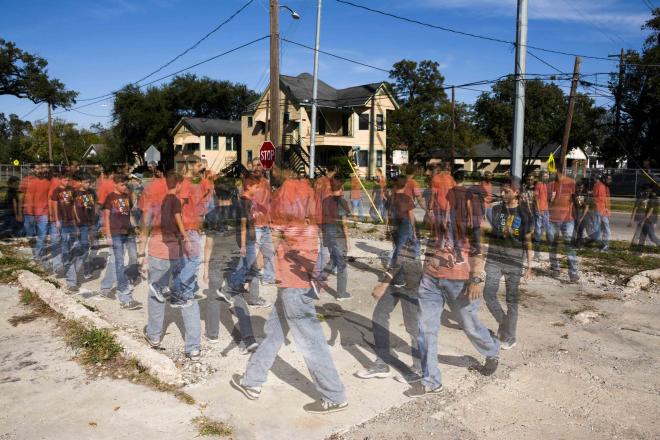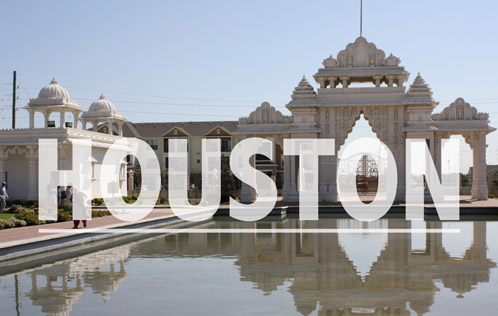
BAPS Shri Swaminarayan Mandir, all images by Susan Rogers
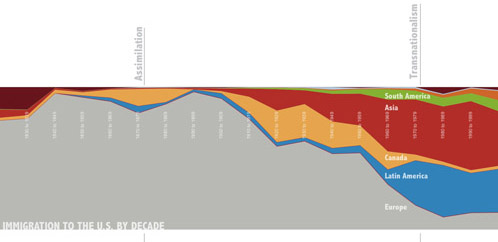
Above: Immigration to the U.S. by country of origin, from 1830 to 2000. South America - green, Asia - red, Canada - orange, Latin American - blue, Europe - gray

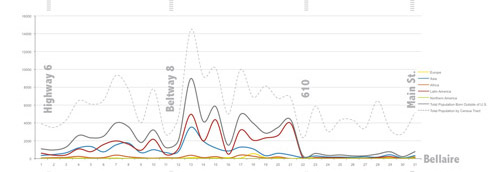
Above: Population born outside the U.S. and country of origin for census tracts bordering Bellaire/Holcombe from Highway 6 to Main St. Europe - yellow, Asia - blue, Africa - organ, Latin America - red, Northern America - green, Total Population Born Outside US - gray, Total Population - dotted
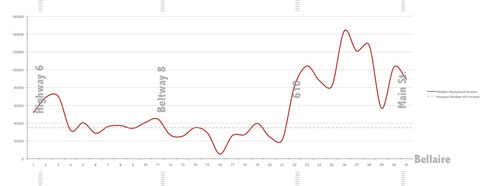
Above: Income for census tracts bordering Bellaire/Holcombe from Highway 6 to Main St. Median Household Income - red, Houston Median Household Income - dotted
While Houston often parallels national trends, it also bucks them. Looking at one slice of the city, --- the Bellaire/Holcombe Corridor from the Medical Center to Highway 6 --- provides insight into the major shifts that have occurred in the landscape and demographics of our cities over the last 20 years.
First a little history. Immigration to the U.S. spiked in two periods: the first period roughly around 1900 and the second at the turn of the 21st century. Yet the two periods are strikingly dissimilar, in one era assimilation was rewarded and quite seamless as most new residents arrived from Europe, in the second era a transnational approach is more common, where global connections to home countries, cultural traditions, and languages are maintained.
These two periods also differ in terms of settlement patterns. In 1900 most new arrivals to the U.S. settled in the center of cities, in 2000 it was the periphery—and the changing meaning of center and periphery began to unfold. In Houston, the original Chinatown was established east of downtown, now renamed as “EADO.” And Little Saigon (along Milam) has for the most part been folded into the new sparkling developments of Midtown. The cores of those communities shifted to the periphery.
While these trends are subject of a great deal of study across the U.S., in Houston it seems ordinary. Yet, entirely new landscapes are being formed on the outskirts of cities like Houston where traditional western building forms collide with cultural diversity in the global city.
The Bellaire corridor is one of the most paradigmatic examples of these changes. The area has fundamentally transformed from a traditional bedroom community to a global corridor, once more likely to be the home of swinging singles, but now is home to a diverse and globally connected population. If the global north and south, center and periphery, were ever really separated along national lines, today they clearly infuse one another, distributing inequalities and barriers along multiple and fractured lines, including within national boundaries. But the diversity drops steeply inside 610.
This slice of Houston illustrates that we continue to have divisions, that income is distributed geographically, that we have continued to develop settlement patterns that set us apart from one another, and that the areas that have transformed the most profoundly are not inside the Loop at all, but in the zone between the Loop and Beltway.










